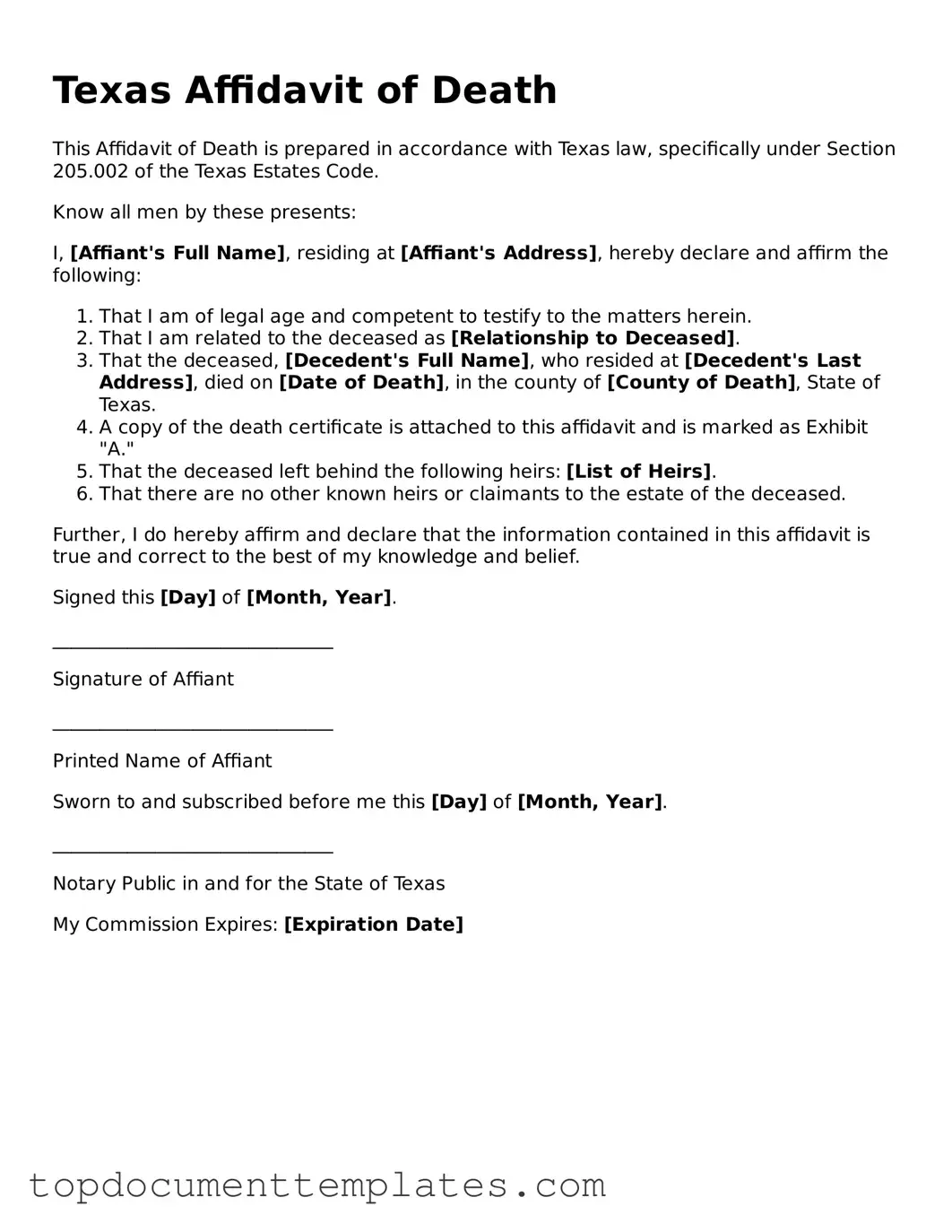Valid Affidavit of Death Form for Texas State
The Texas Affidavit of Death form is a legal document used to officially declare the passing of an individual, facilitating the transfer of property and settling of estates. This affidavit serves as a vital tool in estate administration, providing necessary information to support the claims of heirs and beneficiaries. Understanding how to properly complete this form is crucial for those managing the affairs of a deceased loved one.
To fill out the Texas Affidavit of Death form, click the button below.
Open This Form
